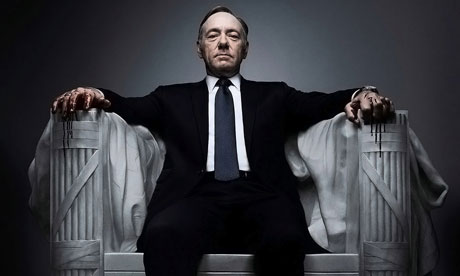
“Sorry, Netflix is not available in your country yet. Enter your email and we'll let you know when Netflix is available.” The North American video-on-demand (VOD) provider boasts 40 million members in 40 countries, but Australians who want to sign-up are still thwarted. Despite its astronomical success in the states and entry into the UK market, Netflix doesn’t yet seem to have an Australian strategy. And beyond Netflix, there’s still not one major VOD provider in Australia – even with the near-revolutions in digital film distribution.
Audiences have admittedly been somewhat slow on the uptake. According to Screen Australia, the increase in online film viewing in the last decade is “exponential”, but the dozen or so existing legitimate VOD services cater to more niche audiences: Mubi, for instance, delivers a hand-picked, classic film every day; BeamAFilm is a documentary specialist; and Quickflix has not yet reached Netflix USA level of mainstream popularity or even profitability. YouTube is the biggest VOD competitor: it legally streams pay-per-view films, as well as the more obvious free fare.
There’s little doubt that distributors, cinemas and Foxtel – previously a favourite option for movie fans at home – are looking fearfully at developments in the American market where it was predicted 18 months ago that streaming would overtake DVD and Blu-Ray sales. Film is hurtling away from the cinema, towards the lounge room and the mobile.
Not that you would know it from looking at cinema's approach to distribution – last week Netflix’s chief content officer Ted Sarandos used to a speech to criticise the “antiquated” model of different release windows for different media. And Stephen Langsford, founder and CEO of Quickflix, said: “When you’re a big traditional player, you want to ignore the new models because you want to protect your legacy system.”
But what’s stopping the old guard from jumping on board and owning a slice of the digital market? Perhaps it’s the Australian market’s relative puniness. Is a population of 22 million people worth the investment? But while the market here is small, it is open nonetheless.
Andrew Hazleton of Leap Frog, a new Australian distributor, said that because Australians were early adopters and already big consumers of English language content, “Netflix would definitely be embraced and find fast growth if they entered the Australian market.”
Hazleton disagrees with the argument that Australia’s comparatively slow broadband speed is holding back VOD investment, and Langsford says his research suggests that 70% of households in capital cities – around 10 million people – have sufficient broadband speeds to stream Netflix.
Unlike the iTunes store, Netflix’s subscription-based service allows users to stream unlimited content every month. That’s a distinctly different business model from the old-world one, in which viewers paid for each and every film they watched at the cinema and on DVD. It’s a buffet-style, digital-age model that the major studios just can’t get their heads around.
For that reason, digital rights management remains a huge obstacle. The major studios will not currently license all their back catalogues to be included in subscription VOD packages. Langsford says the decisions as to what can be included in the premium packages and the advertising-supported VOD packages are made “title by title, studio by studio. Some [television] content can be made available 24 hours after broadcast, some only after the season finale.” So viewers who have Quickflix’s $14.99 premium package but want to watch an episode of The Newsroom season 2 need to pay an extra $2.99.
It’s a messy licensing scenario – the old-world rights templates don’t fit in the digital world but the historical gatekeepers still hold the fort, dictating the usage of the world’s most popular content.
Could the major studios be scared Netflix will become the next big studio? After all, VOD services are no longer aggregators, but original broadcasters. Earlier this year House of Cards, Arrested Development and Orange is the New Black were created by VOD providers, and broadcast directly online. These programs are already part of the regular television landscape: reviewed, nominated for awards, dissected daily on blogs. VOD is the new HBO.
First-run, online films are next on Netflix’s radar and a seemingly simple inquiry – “where is the Netflix equivalent in Australia?” – opens up a chasm of big-picture dilemmas in a massively disrupted media landscape. One thing however is certain: without convenient, quality, inexpensive VOD providers, Australians will continue to turn to convenient, quality, free piracy in droves.
• Lauren Carroll Harris is the author of new Platform Paper Not at a Cinema Near You: Australia’s Film Distribution Problem, published by Currency House.

